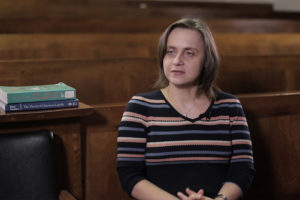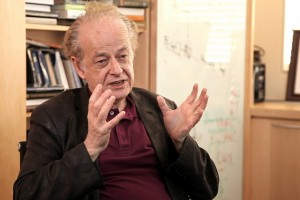Superfluidity of Light
Physicist Marzena Szymanska on the properties of photons, fluids of light and whether it’s possible to make a ...
What happens at the phase transition of Bose-Einstein condensation? Could you still have equilibrium of a gas at very low density? Where can the accomplishment of nanokelvin temperature lead? These and other questions are answered by John D. MacArthur Professor of Physics at Massachusetts Institute of Technology Wolfgang Ketterle.
Bose-Einstein condensate is a new form of matter, which was predicted by Albert Einstein in 1925 based on previous work by the Indian physicist Bose. Bose-Einstein condensate is characterised by the fact that all particles march in lockstep, they form one quantum mechanical wave. In ordinary gas particles move randomly in all directions, that is random thermal motion. However, in a Bose-Einstein condensate all particles occupy the same quantum state, which means they behave as one big quantum wave.
The fact that Bose-Einstein condensation was predicted in 1925 and observed in the laboratory only in 1995 — seventy years later — indicates that there were certain challenges in realizing Bose-Einstein condensation. We know now that Bose-Einstein condensation can be only achieved when you cool gases down to nanokelvin temperature … you have to go very close absolute zero. Just to put it in context: nanokelvin temperature is more than a million times colder than interstellar space.
If you cool down any form of matter to very low temperature, what happens? Well, all matter liquefies and solidifies at low temperature. But Bose-Einstein condensation is about a special property of the gas of particles. So, from that you would conclude [that] Bose-Einstein condensation — how it was described by Einstein — cannot be realized in nature, because before atomic gases would form a Bose-Einstein condensate they would first freeze, liquefy and solidify.

Physicist Marzena Szymanska on the properties of photons, fluids of light and whether it’s possible to make a ...

The new research suggests that deep water layers may have played a role in ending the last glacial period in t...

Harvard University professor, Federico Capasso, on Casimir light, the difficulties of experimentation, and pos...